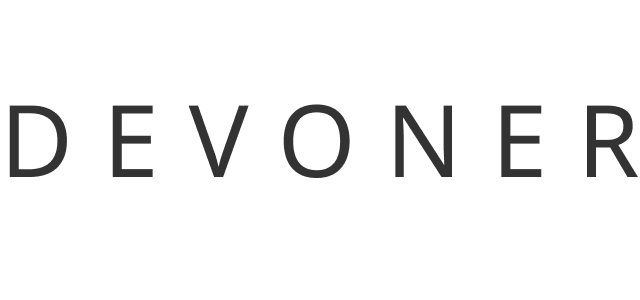In 2024, building a blockchain application can significantly revolutionize trust and efficiency across various industries. By decentralizing transactions, the technology ensures heightened transparency and security while mitigating fraud risks. Blockchain applications streamline processes by facilitating global transactions seamlessly and automating contracts, enhancing data privacy and supply chain transparency.
Devoner, an expert in software development and IT solutions, excels in helping businesses build cutting-edge blockchain applications. Devoner stands out by connecting businesses with top-tier blockchain developers, ensuring adherence to the highest standards of user experience, security, and functionality. With a team of highly vetted blockchain experts, Devoner guarantees proficiency in advanced technologies to deliver exceptional results for your blockchain projects.
In this blog, we will explore blockchain applications and their features, delve into their typical uses and benefits, and guide you through the essential steps to build blockchain projects with key user and admin-side features, ensuring a secure, efficient, and transparent application for your networks.
Let’s dive in!
What is a Blockchain Application?
A blockchain application is a decentralized application built on blockchain technology. This innovative approach relies on a distributed ledger shared among computer nodes, creating a secure, transparent, and censorship-resistant platform for network participants. The fundamental strength of blockchain projects lies in their ability to store data and execute transactions with unparalleled security and transparency.
By utilizing a distributed ledger, these applications ensure that once data is recorded, it becomes immutable, fostering a verifiable and auditable history of transactions without needing a centralized entity. The versatility of blockchain projects extends beyond cryptocurrencies like Bitcoin and Ethereum. They find applications in various industries pivotal in digital identity verification and supply chain management.
Since the inception of Bitcoin in 2009, blockchain technology has significantly evolved. The explosion of various cryptocurrencies, the rise of decentralized finance (DeFi) applications, the advent of non-fungible tokens (NFTs), and the implementation of intelligent contracts showcase blockchain applications’ expansive and transformative potential.
The decentralized nature, coupled with the immutability and transparency of blockchain, positions these applications as resilient and reliable solutions across diverse industries, fundamentally reshaping how transactions and data are efficiently handled today.
How to Build a Blockchain Application in 2024
Developing a successful blockchain application in 2024 necessitates combining a strategic approach, user-friendly design, sophisticated features, and stringent security protocols, resulting in a successful blockchain that meets the demands of both technology and user expectations. Here’s a glimpse into the essential development steps for creating a blockchain project:
Step 1: Analyze the Industry for Blockchain App Development
Analyzing industries like finance, insurance, healthcare, real estate, retail, supply chain, and gaming is the initial step in building a blockchain application. The goal is to identify each industry’s needs and determine how blockchain can be beneficial. Learn from examples like JP Morgan Chase and Insurwave to see how others have successfully used blockchain to enhance clarity, speed, and security in their businesses.
Steps to consider in analyzing the industry:
- Dive into Sectors: Thoroughly explore various industries to identify specific areas where blockchain can bring transformative value to app development.
- Tailored Blockchain Solutions: Innovate by understanding unique industry needs and tailoring blockchain solutions to address those needs effectively.
- Insights from Pioneers: Learn valuable insights from industry leaders such as JP Morgan Chase and Insurwave, understanding the nuances of successful blockchain implementations.
- Revolutionizing Finance: Examine how blockchain can revolutionize finance, bringing transparency and efficiency to financial transactions.
- Building Retail Trust: Implement blockchain strategies inspired by successful implementations at Overstock and Expedia to enhance trust in retail transactions.
Step 2: Finalize an Idea for Your Application
Deciding on the unique concept of your blockchain project is crucial at this stage. This involves developing a creative and innovative idea while considering whether blockchain is necessary for your project. It’s a critical step where you balance the potential for profitability with the development costs. The goal is to establish a clear direction for your blockchain application that meets specific needs and adds value using a consensus mechanism such as proof of work.
Crucial steps to consider when finalizing your concept:
- Crafting a Unique Blueprint: Formulate a distinctive and innovative idea, preparing a detailed blueprint for the blockchain projects.
- Necessity Assessment: Rigorously assess the necessity of blockchain in your application concept, ensuring a well-founded approach.
- Balancing Profitability: Balancing profitability and development costs, considering trade-offs and potential revenue streams.
- Enhancing Transparency: Explore scenarios where blockchain can enhance transparency, improving your application concept.
- Validation through Testing: Test and validate the necessity of blockchain for your application, ensuring a robust foundation for development.
Step 3: Do Competitor Research
This step involves carefully studying other players in the field of blockchain application development. It’s about understanding their strategies, where they excel, and where they might face challenges. Learning from competitors through platforms like LinkedIn or Facebook can give you valuable insights to shape your approach to blockchain projects. Not only can you stay innovative, but you can also adapt to market trends and position yourself strategically on the competitive edge of blockchain project development.
Essential factors when doing competitor research:
- Holistic Competitor Analysis: Conduct a comprehensive analysis of competitors, understanding their strategies, strengths, and weaknesses.
- Platform Identification: Identify competitors through platforms like LinkedIn or Facebook, gaining insights into their presence in the blockchain app development space.
- Strategic Examination: Strategically examine competitors’ innovations in blockchain technology, identifying areas for differentiation and improvement.
- Driving Innovation from Challenges: Understand how competitors approach and overcome challenges, leveraging these insights for innovative solutions.
- Benchmarking Success: Benchmark against competitors to refine your strategies and ensure success in the dynamic blockchain landscape.
Step 4: Choose a Platform for Your Blockchain Project
Picking the platform for your blockchain project involves choosing between creating a new system from scratch or using existing ones like Ethereum or Hyperledger, which act as operating systems for blockchain app development. The platform you choose will impact how smoothly your project runs, from development to how it handles tasks. It’s about finding the best fit for your project’s goals and technical needs and laying the groundwork for a successful blockchain application.
Steps to consider when choosing a platform:
- Informed Platform Selection: Make intelligent and informed choices in selecting a platform based on meticulous market research and analysis.
- The Decision between Crafting and Adopting: Decide between crafting a new framework or adopting existing platforms like Ethereum, Hyperledger, R3 Corda, or Ripple.
- Tailoring to Specific Needs: Tailor your platform choice to suit your project’s specific needs and requirements, ensuring optimal compatibility.
- Harmony in Programming: Evaluate programming languages and choose a platform that harmonizes with your development team’s skills and preferences.
- Aligning with Tech Goals: Ensure your platform aligns seamlessly with your blockchain project’s technical goals and requirements.
Step 5: Design Your Blockchain Application
Designing a blockchain app involves creating a well-thought-out, easy-to-use platform that meets users’ needs while considering the latest trends and developments in the blockchain market. Once done choosing a platform, implement the blueprint for the blockchain app. Using up to 20% of your budget, this phase is crucial to ensure the app works seamlessly. Figure out how everything fits together, focusing on making it easy for users. Prioritizing their experience, smooth navigation and accessibility ensure your app is visually appealing and user-friendly.
Factors to consider when planning your blockchain app:
- Budgeting for Design Excellence: Allocate a budget that allows for excellence in the design phase, recognizing its critical role in the application’s overall success.
- Comprehensive Feature Mapping: Map out features comprehensively, ensuring a cohesive and functional design that aligns with user expectations.
- User-Centric Focus: Prioritize a user-centric design that enhances the blockchain platform’s overall user experience (UX).
- Seamless Responsive Navigation: Ensure seamless navigation with a responsive design, catering to users across various devices and screen sizes.
- Accessible Design Elements: Craft visually appealing and accessible designs, following accessibility guidelines to cater to a diverse user base.
Step 6: Start the Development and Testing Process
This step is where the plans become reality, and the actual coding begins. The key is to make intelligent decisions about programming languages and methods, ensuring a smooth transition from ideas to existing code. Testing is crucial to confirm that everything works as intended, including the business logic and blockchain integration. And, of course, meeting app store requirements is essential for a successful launch. This step marks the phase where your envisioned blockchain application takes shape, becoming a real, functional, and user-friendly solution.
Key factors to consider when creating the development and testing process:
- Precise Development Kickoff: Initiate the development process precisely, considering factors such as programming languages and consensus methods.
- Straightforward Development Approach: Choose between existing blockchains, Blockchain as a Service (BaaS), or crafting your blockchain with a clear understanding of the development approach.
- Ensuring Smooth Transition: Assure a smooth transition by clarifying details before the coding starts, setting the stage for a seamless development process.
- Confident Testing Procedures: Conduct thorough testing, instilling confidence in the functionality and reliability of your blockchain application.
- Ensuring Compliance for Success: Comply with app store requirements, ensuring your blockchain meets all standards for a successful deployment.
Step 7: Maintenance and Support
Ensure the well-being and assistance feature of your project. This step is about regularly checking and updating to keep things running well. Maintenance keeps everything smooth, and support helps users with their questions. These two parts make sure the blockchain application stays functional and effective for everyone.
Factors to consider when ensuring maintenance and support:
- Ensuring Post-Launch Success: Emphasize the importance of maintenance and support in ensuring the success and longevity of your blockchain application.
- Proactive Monitoring: Implement proactive monitoring practices to identify and address issues before they impact users.
- User Assistance: Provide comprehensive user support to assist with queries, troubleshooting, and ensuring a positive user experience.
- Continuous Improvement: Regularly update and enhance the application, incorporating user feedback and addressing potential security vulnerabilities.
- Sustaining User Confidence: Prioritize sustaining user confidence through timely responses and efficient resolution of issues.
Features of Blockchain Applications
Features are the building blocks of a blockchain application, ensuring it fulfills its purpose and delivers a seamless user experience. The following essential elements are vital for creating an effective and user-friendly blockchain project.
Essential Features for Users:
- Sign-Up/Login: Securely access the blockchain application through a robust and user-friendly authentication process.
- Profile Management: Efficiently manage user profiles, ensuring data integrity and customization options.
- Search Bar: Navigate and find specific information quickly and easily within the application.
- Notifications: Stay updated with real-time notifications for important events and activities.
- Transactions: Facilitate seamless and secure transactions within the blockchain ecosystem.
- Wallet: Access a secure digital wallet to store and manage digital assets.
- Help Section: Provide users with comprehensive support and assistance, enhancing their experience.
Essential Features for Admin:
- Admin Console: Access a powerful and intuitive interface for managing and overseeing the blockchain application.
- User Management: Efficiently manage user accounts, permissions, and roles.
- Dashboard: Gain real-time insights and analytics into the application’s performance and activities.
- Security Management: Implement and monitor robust security measures to protect the blockchain network.
- Application Programming Interfaces (APIs): Facilitate seamless integration and communication between different components of the blockchain application.
- Statistics and Analytics: Access comprehensive statistics and analytics for informed decision-making.
- Backup and Restoration: Ensure data integrity and availability through regular backup and restoration processes.
Benefits of Blockchain Applications:
Blockchain applications offer numerous advantages that can transform businesses and industries. Key benefits include:
- Improved Security: Blockchain ensures data integrity and reduces the risk of fraud and hacking.
- Transparency: Blockchain’s decentralized nature fosters transparency and trust among participants.
- Efficient Transactions: Streamlined processes reduce the need for intermediaries, resulting in faster and cost-effective transactions.
- Automated Contracts: Smart contracts automate and enforce agreements, reducing administrative overhead.
- Enhanced Data Privacy: Blockchain provides secure and private data storage and sharing.
- Supply Chain Transparency: Track and verify every step of the supply chain for improved efficiency and accountability.
- Digital Identity Verification: Securely verify identities and credentials without relying on a centralized authority.
Conclusion
In the ever-evolving landscape of blockchain technology, building a successful blockchain application requires a strategic approach, innovative features, and a commitment to security and user experience. By following the steps outlined in this guide and leveraging the expertise of Devoner, businesses can create cutting-edge blockchain applications that revolutionize industries, enhance transparency, and drive efficiency.
Devoner is your trusted partner in blockchain application development, connecting you with top-tier blockchain developers who excel in delivering state-of-the-art solutions. Our team of experts ensures that your blockchain project meets the highest standards of security, functionality, and user experience.
Contact Devoner today to embark on your blockchain journey and unlock the full potential of blockchain technology for your business.


